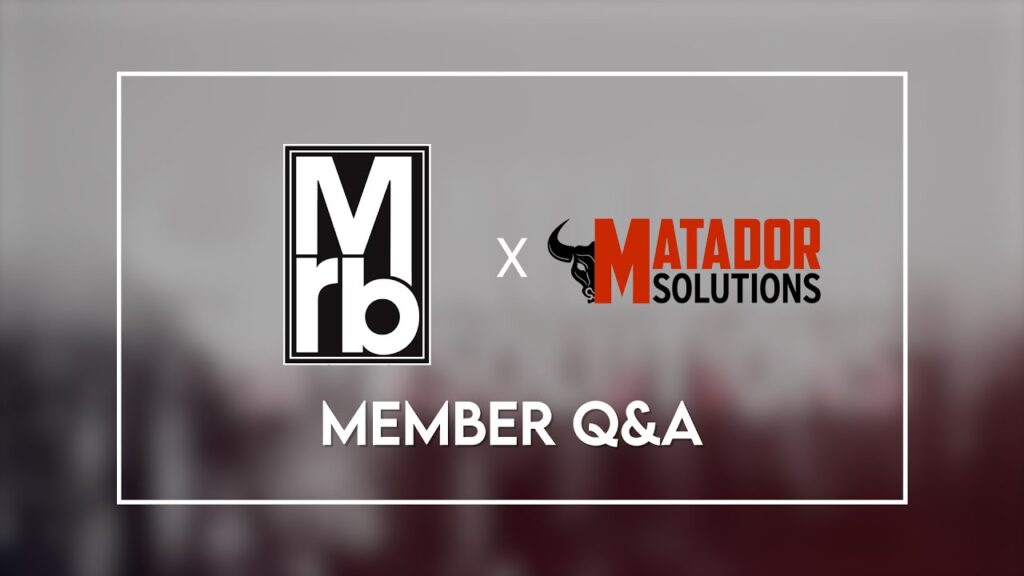Lead conversion is essential for client growth. As a trusted marketing solutions provider, Matador is excited to expand on streamlining your law firm’s lead intake process by sharing proven strategies for driving web traffic.
You can read Part 1 on Lawbrokr’s blog, where we highlighted the impact of contact forms, phone tracking, and chat tools. In Part 2, we explore how law firms can drive higher-quality to their websites, so that leads convert into clients.
You’ve invested in your website to attract new business and grow your practice. To optimize engagement, you may have added a chatbot, such as Intaker.com, or optimized your intake process with contact forms through Lawbrokr.
But, if you haven’t addressed this critical question, your website isn’t as effective as it could be. How are potential clients actually getting to your site?
Understanding how visitors find your site and behave once they get there is the missing link in most law firm marketing strategies. No matter how aesthetic your web design or how intuitive your chatbot or form-fill is, your site can’t convert people who have never visited in the first place.
There are five primary traffic sources most law firm websites rely on. By learning how each one works and what firms in the Matador Solutions Co-Op are doing to generate not just more traffic but better quality traffic that delivers real leads, you can streamline your client growth strategy.
Breaking Down Website Traffic Metrics
There are main ways to drive traffic to a website. Understanding which combination of sources to focus on is essential for developing an effective marketing strategy. In Matador’s Co-Op model, performance data is shared across participating firms, offering insights that can shape the approach your law firm takes to drive traffic.
The average 60-day breakdown of the top five sources of web traffic looks like this:
- Organic Search (SEO): 50%
- Paid Traffic: 20%
- Direct Traffic: 10%
- Referral Traffic: 10%
- Social Media Traffic: 10%
Each channel plays a different role in your growth strategy. Here’s how they work and what you should watch for.
Organic Search (SEO) – 50%
Organic traffic comes from people typing questions or keywords into a search engine like Google and clicking on your website in the search results.
This type of traffic is highly valuable because these visitors are actively seeking legal help. Their search and subsequent site visit were intentional, increasing the odds that they represent a qualified lead.
The better your SEO strategy, the higher your firm’s site appears in their search. Implementing relevant keywords to drive organic traffic is a cost-effective and sustainable solution to increase traffic volume, as there is no cost-per-click associated with it, unlike paid ads.
Additionally, visitors who land on your site from an organic search tend to have longer sessions, meaning they spend more time on your site. This higher rate of engagement is more likely to result in a form-fill, chatbot conversation, or phone inquiry.
For firms in the Co-Op, SEO consistently drives the largest share of traffic and the best engagement. Overall, these visitors are more likely to read multiple pages, spend more time onsite, and ultimately convert.
Paid Traffic – 20%
Paid traffic includes any visitors who arrive through digital advertisements, such as:
- Google Ads
- Facebook, LinkedIn, or Instagram Ads
- Listings on legal directories like FindLaw or Avvo
Firms that leverage this traffic source can benefit from improved brand awareness and immediate visibility in competitive markets. While SEO is highly effective, it takes a while to improve your firm’s search rankings. Paid ads can help deliver leads while you optimize your organic search strategy.
Additionally, if your law firm wants to promote a specific practice area, digital ad campaigns allow for a targeted marketing focus to build your client list.
However, paid traffic tends to have shorter session durations. People often click quickly, skim the page, and leave. Therefore, you must be strategic about where you send them on your site. Connecting your ad to a relevant landing page with a clear and strong call to action is critical for success.
Direct Traffic – 10%
Direct traffic refers to people who are already familiar with your firm. They have likely visited your website before or were suggested your services by an existing client. These visitors access your site by typing your web address directly into their browser. These visitors aren’t searching for general assistance like organic traffic or encouraged to engage from an ad. They went online with the singular purpose of interacting with your firm.
Direct traffic typically accounts for a small percentage of total visitors but often includes returning users or referrals, which are more likely to convert.
Referral Traffic – 10%
Referral traffic comes from other websites that link to yours, such as:
- Local legal directories
- Partner law firms or bar associations
- Articles you’ve been quoted in
Referral sources can build credibility, especially if they come from high-authority sites. In the Co-Op, firms often experience improved performance when their profiles are consistently listed across trusted legal platforms.
Social Media Traffic – 10%
Social traffic is generated when someone is on a social media platform like Facebook, Instagram, LinkedIn, or YouTube and clicks a link to your website. They may have engaged with your firm’s published post or video, content someone in their network shared, or an active ad campaign.
Social media marketing is an effective way to build brand awareness. Law firms achieve success in generating this traffic through informative videos, including client testimonials, insights on broad legal topics, and best practices specific to a particular service. Posts showing your support in community events reinforce your mission and values, often leading to high engagement as well.
Social is top-of-funnel traffic, which means these visitors aren’t always ready to hire. These interactions are usually motivated by information-seeking or brand curiosity. However, if your firm leverages the right follow-up strategies, such as a chatbot or effective remarketing, they can become future clients.
Why Session Duration Is A Key Metric
Improving your website traffic numbers is important, but not at the expense of quality. You want people on your site who need your services or are highly likely to retain them in the future. One of the best ways to gauge quality is by looking at session duration. This metric shows the amount of time a visitor spends on your site.
Session duration is a leading indicator of whether someone is engaged or just passing through your site.
- Organic visitors tend to stay longer because the content matches what they’re looking for.
- Paid visitors often bounce more quickly unless the ad and landing page are closely aligned.
- Social and referral visitors vary but can be nurtured with the right content path.
Longer sessions often lead to more form fills, chat interactions, and phone calls. So, while quantity matters, quality traffic is what drives conversion.
How Traffic Quality Directly Impacts Lead Generation
Driving traffic to your website is only half the battle. Once visitors arrive, the next critical step is turning that traffic into qualified leads.
There are three primary ways potential clients initiate contact:
- Phone Calls – For phone-based intake, Matador Co-Op recommends Smith.ai, which provides 24/7 receptionist services and call tracking support.
- Chatbots – Tools like Intaker allow for instant engagement and conversational qualification, even after hours.
- Contact Forms – Lawbrokr offers guided, mobile-first workflows that help prospects understand their legal situation and self-qualify before they ever speak with your team.
Not all website visitors are ready to talk, and even fewer are ready to hire. However, quality traffic that aligns with your practice area, geographic market, and case value goals can make all the difference.
Each of these intake solutions is a trusted Matador Co-Op partner and plays an influential role in lead conversion.
For example, for law firms in Co-Op, higher-quality SEO traffic often leads to:
- Better chatbot engagement via Intaker
- More completed digital forms through Lawbrokr
- Higher-value phone inquiries routed through Smith.ai
- Lower cost-per-lead overall
When your site attracts informed, motivated visitors, your lead-generation tools become far more effective.
Bottom line: If you want to boost conversions, start with better traffic.
To accomplish this goal, it is essential to align your content with what people are searching for. Relevance makes a significant difference in how visitors behave once they land on your site. If you aren’t supplying the information they are looking for or don’t make their next steps clear, they will move on without converting.
Implementing an SEO strategy can help you pull in potential clients early in their decision-making process. You can catch them right as they are considering hiring legal representation, improving the odds of your firm being hired.
The Co-Op Advantage
One of the challenges for solo firms or small practices is visibility. You may not have the budget to compete with national advertisers or the time to test dozens of tactics.
That’s where the Matador Solutions Co-Op comes in.
Through shared data, pooled SEO resources, and continuous optimization, Co-Op members gain the insights and infrastructure of a large-scale marketing operation without the massive spend.
Your firm can benefit from:
- Proven content frameworks
- Smart keyword strategies
- Benchmarking across other high-performing law firm sites
Traffic Fuels Everything
If you’ve already optimized your intake through better chatbots, faster forms, or strong calls to action, the next step is increasing the number of visitors to your site.
The way you drive traffic matters. Not all clicks are created equal, and without high-quality visitors, even the best website will underperform. By understanding your traffic sources and using tools like the Co-Op to build better ones, you set the foundation for sustainable growth.
Because the real goal isn’t just web traffic, it’s new clients.



